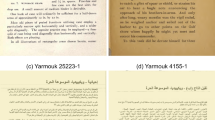In this paper, we present an efficient global illumination technique, and then we discuss the results of its extensive experimental validation. The technique is a hybrid of cluster-based hierarchical and progressive radiosity techniques, which does not require storing links between interacting surfaces and clusters. We tested our technique by applying a multistage validation procedure, which we designed specifically for global illumination solutions. First, we experimentally validate the algorithm against analytically derived and measured real-world data to check how calculation speed is traded for lighting simulation accuracy for various clustering and meshing scenarios. Then we test the algorithm performance and rendering quality by directly comparing the virtual and real-world images of a complex environment.
Similar content being viewed by others
Author information
Authors and Affiliations
Rights and permissions
About this article
Cite this article
Myszkowski, K., Kunii, T. A case study towards validation of global illumination algorithms: progressive hierarchical radiosity with clustering. Visual Comp 16, 271–288 (2000). https://doi.org/10.1007/s003719900067
Issue Date:
DOI: https://doi.org/10.1007/s003719900067




